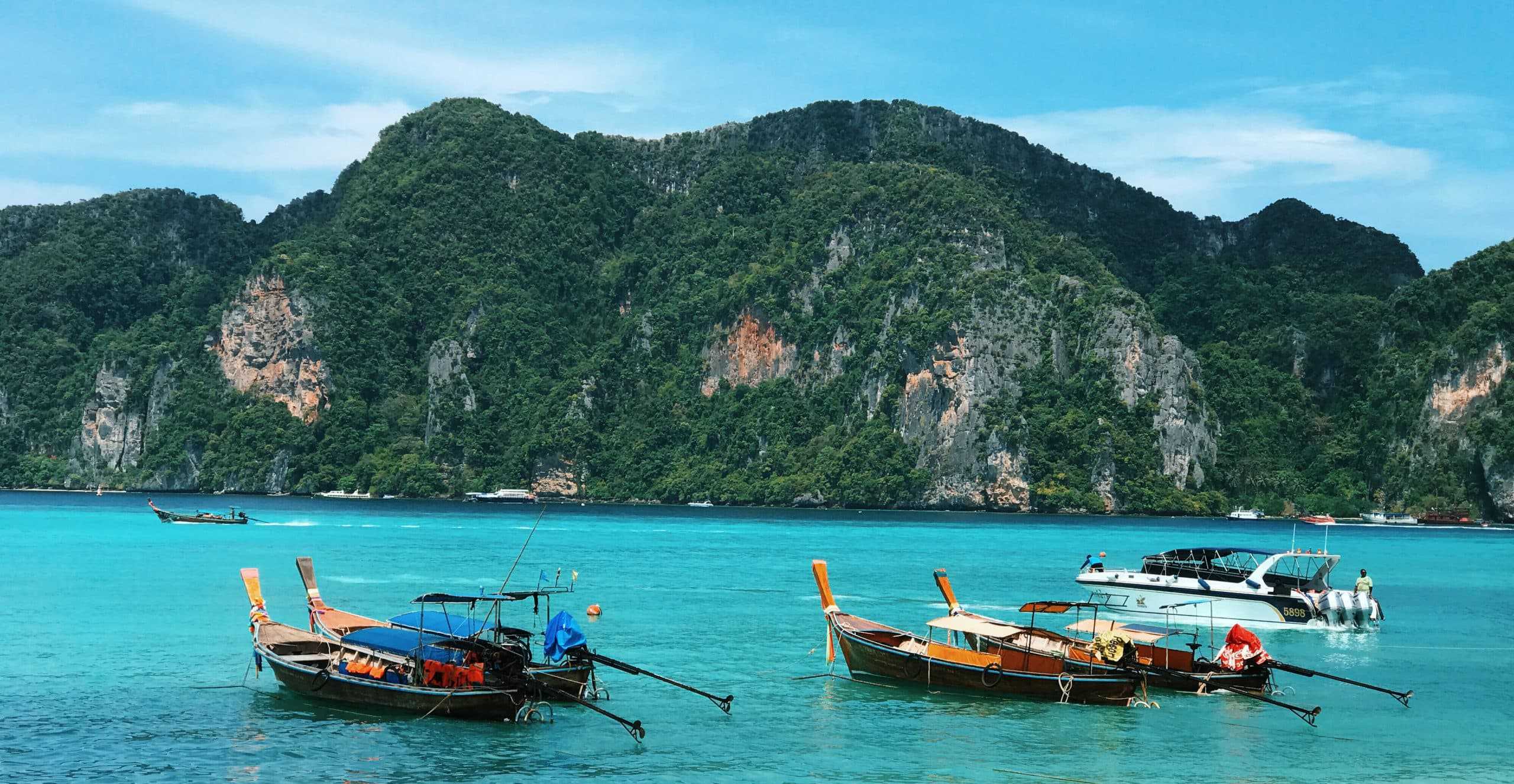
3 Ways to experience Thailand
The mention of Thailand conjures up images of palm-edged pristine sands, karst studded bays, tranquil temples and ancient cultures. But what makes Thailand such an alluring destination?
Our travel specialists handpick three creative ways to experience Thailand’s culture, traditions and natural wonders. For instance, you could explore the backstreets of Bangkok, hike into one of the oldest rainforests on earth, or practise traditional batik painting in the quiet Phang Nga Bay, of Koh Yao Noi island. Each of these experiences can be easily combined into a trip across the country.
A quintessential Asian megacity, Bangkok is a clash of sleek office buildings, ancient temples and streets filled with the scent of barbecued skewers and freshly prepared curries. It’s a hub for visitors, whom you’ll mostly see touring the kaleidoscopic City Palace and wandering down the t-shirt stalls of Koh San Road.
On my most recent trip, I joined Paul, a Bangkok resident, who showed me another side to the city. We began by crossing the Chao Phraya River which splits the cosmopolis and started to explore its quiet western banks. Immediately you notice a difference: more greenery, low-rise buildings and a distinct lack of fellow adventurers.
On this tour, which lasts around a morning or an afternoon, you’ll stroll through the Spanish and Muslim quarters, dipping into churches and Sri Lankan temples. We stopped to admire the intricately carved doors of a 200-year-old mosque. Paul explained how certain communities came to live here, and how once this was the heart of the city, before the larger financial districts popped up across the river.
Everyday life in Bangkok
In the Portuguese quarter, we stopped at a small house for a pastel de feijão, a light, fluffy pastry covered in icing sugar. Among the faded ochre walls of the Portuguese architecture, I felt, momentarily, like I was in Europe. However, a few paces later we passed an old stilted wooden house that looked like it was slowly sinking into the river. Sitting on the porch was an elderly man who waved us over, eager to find out where I was from and why I’d veered into this area.
As my tour came to an end, we passed a mosque which pulsed with celebratory music (‘a wedding’, grinned Paul). Some of the guests had spilled outside and when they spotted us, ushered us in for a plate of food. I asked Paul if this was a rare occasion. ‘No,’ he said, smiling, ‘this is community life in Bangkok’.
Where next? Take a five-hour scenic train journey on a commuter train from Bangkok to Sukhothai.
Take a Thai cooking class in Sukhothai
Wherever I am in the world, there always seems to be a Thai restaurant nearby. The country’s internationally popular cuisine is arguably its biggest pull for visitors, as there’s nothing quite like tasting a Thai red curry or tom am soup in the country of its birth.
There are opportunities to refine your own Thai cooking skills right across the country, but to get really hands-on, I suggest making your own noodles in Sukhothai. The city tends to hit the guidebooks due to its historical park, a sprawl of ruined temples and monasteries where the kingdom of Siam was originally founded. Across Thailand, it’s also a city synonymous with a hearty pork noodle dish.
Learning the art of the noddle
In a tiny restaurant on the outskirts of the historical park, you’ll be shown the fine art of making Sukhothai noodles, which have a chewier, thicker texture than traditional noodles. The dish, like all Thai cuisine, aims for the ultimate balance of sweet, salty, sour and bitter tastes, and you’ll add barbecued pork, limes, palm sugar and chilli in perfect unison. If you’re vegetarian, tofu is used instead.
When the dish is ready, you’ll sit down to try your creation, which is served with crushed peanuts, more lime and crunchy green beans — and a rewarding glass of iced coffee or plum soda.
Where next? Catch a short flight from Bangkok to Chiang Rai.
Visit Chiang Rai’s elephant sanctuary – One of the best ways to see elephants in Thailand
You’ll see pictures of elephants in the airport and on beer bottles, currency and almost every type of souvenir. Elephants are an important symbol to the Thai people and encountering them has become a classic Thai experience.
In a way, I find that frustrating, as there are lots of wrong ways to do it. But, there are also some really worthwhile ways to support these gentle, inquisitive creatures. For me, the best way to see elephants is at the Elephant Valley Project. Set in a vast tract of jungle on the outskirts of Chiang Rai, a small handful of ex-logging and circus elephants live with their mahouts and a team of enthusiastic volunteers.
On arrival at the sanctuary
When I arrived, I was almost immediately following one of the volunteers into the jungle. We soon spotted an elephant, casually running its trunk over a tree looking for snacks. We kept our distance, which is especially important here — the elephants are slowly being trained to reconnect with their natural environment so that, eventually, they can be released into the wild.
At feeding time, there’s the opportunity to see them up close, and you can help staff pile up giant pineapples (a treat, stamped on once then eaten whole) and leaves into a buffet. You’ll also have the opportunity to sit and lunch with the staff, who are keen to share stories of each elephant’s development, particularly when one has just mastered a new skill that brings them closer to becoming ready for release.
You can visit for the day from Chiang Rai, or even spend the night on site. It’s a very basic experience, with a simple room and shared bathroom facilities in a converted farmhouse, but it was quite something to listen to the elephants’ morning trumpeting as I woke.
Where next? From Chiang Rai it’s a short flight to Phuket, followed by a two and a half hour’s drive to Khao Sok National Park.



















































